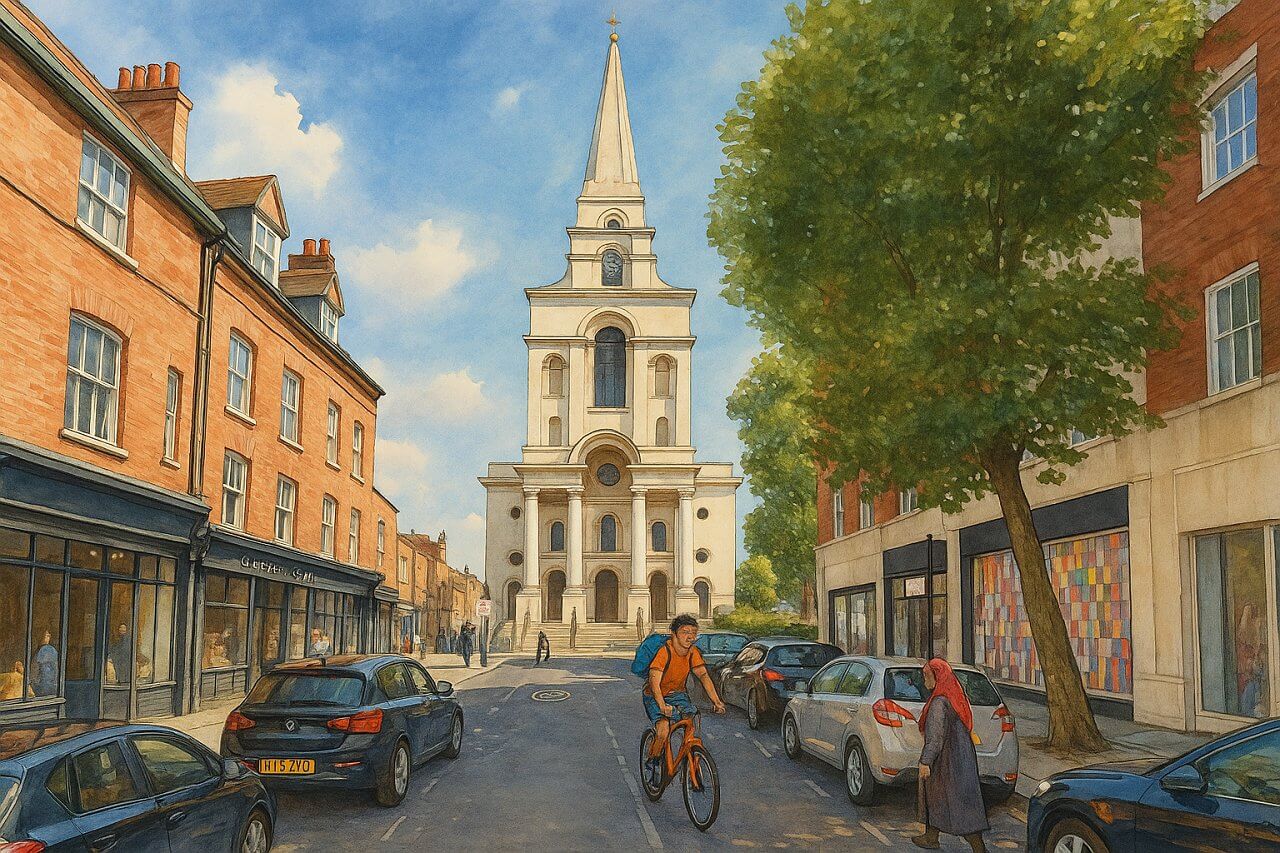
The London Borough of Tower Hamlets
Tower Hamlets is a vibrant and historically significant borough located in East London. Known for its mix of Victorian heritage, industrial legacy, and ultra-modern regeneration zones, Tower Hamlets offers a window into both London’s past and future. It is home to the iconic Tower of London, the bustling Brick Lane, and the soaring skyscrapers of Canary Wharf.
Location and Surrounding Boroughs
The London Borough of Tower Hamlets lies to the east of the City of London and north of the River Thames. It borders the following boroughs:
- City of London to the west
- Hackney to the northwest
- Newham to the east
- Greenwich and Lewisham (across the Thames) to the south
This location places Tower Hamlets at a major geographical and cultural junction in London, bridging traditional East End communities and financial powerhouses like Canary Wharf.
Establishment and Administrative History
Tower Hamlets was established as a borough in 1965 through the merger of three former metropolitan boroughs: Bethnal Green, Poplar, and Stepney. The name Tower Hamlets originates from the historical "Tower division" of the county of Middlesex, which provided military service to the Tower of London dating back to medieval times.
Size, Population, and Demographics
The borough covers an area of approximately 7.6 square miles (19.8 km²). As of the most recent estimates in 2024, the population of Tower Hamlets is around 330,000 people, making it one of the most densely populated areas in the UK, with over 16,000 residents per km².
Tower Hamlets is known for its remarkable ethnic and cultural diversity. The largest ethnic groups are:
- Bangladeshi: approximately 35%
- White British: around 31%
- Other White (including European): 13%
- Black African/Caribbean: about 7%
- Other Asian: 5%
The borough has one of the highest percentages of Muslim residents in the UK, largely due to its significant Bangladeshi population, particularly concentrated around areas like Whitechapel and Shadwell.
Real Estate and Rental Prices
Housing in Tower Hamlets varies from high-end apartments in Canary Wharf to older council estates and Victorian terraces in Bethnal Green and Stepney. As of early 2025:
- Average house price: £525,000
- Average monthly rent for a 1-bedroom flat: £1,900
While these figures are lower than central London boroughs like Westminster or Kensington and Chelsea, they remain higher than many outer boroughs. Gentrification and regeneration have steadily driven up property values in parts of Tower Hamlets over the last two decades.
Roads in Tower Hamlets
Public Transport: Underground and Rail Services
London Underground Stations
Tower Hamlets is well-connected via the London Underground, with stations served by the following lines:
- District Line: Aldgate East, Stepney Green, Bow Road, Whitechapel
- Hammersmith & City Line: Whitechapel, Stepney Green, Bow Road
- Central Line: Bethnal Green, Mile End
- Jubilee Line: Canary Wharf
Other Rail Services
In addition to the Underground, Tower Hamlets benefits from several overground and Docklands Light Railway (DLR) stations, including:
- DLR: Tower Gateway, Shadwell, Limehouse, Westferry, Poplar, All Saints, Canary Wharf, Heron Quays, South Quay, Crossharbour, Mudchute, Island Gardens, Devons Road, Langdon Park, Bow Church
- London Overground: Whitechapel, Shadwell, Wapping
- National Rail: Limehouse (c2c services to Essex)
- Elizabeth Line: Whitechapel and Canary Wharf (opened 2022)
These extensive connections make commuting to the City or Canary Wharf exceptionally convenient.
Points of Interest and Attractions
Tower Hamlets contains a rich variety of attractions for locals and tourists alike, including:
- Tower of London – A UNESCO World Heritage Site and historic fortress
- Canary Wharf – One of London’s main financial centres, with modern skyscrapers and shopping areas
- Victoria Park – A vast and picturesque park in the north of the borough
- Brick Lane – Famous for its curry houses, vintage shops, and street art
- Spitalfields Market – A trendy covered market with boutiques, eateries, and crafts
- Regent’s Canal – Offers scenic walks and boat rides through East London
- Museum of London Docklands – Chronicles the history of London’s river trade and the East End
Fun Fact
Tower Hamlets is home to the largest Bangladeshi community in the UK. The area around Brick Lane was even unofficially renamed "Banglatown" in the early 2000s to reflect this vibrant cultural presence. Street signs in many parts of the borough are written in both English and Bengali.
Quick Facts
- Established: 1965 (merger of Stepney, Bethnal Green, and Poplar)
- Location: East London, bordering City of London, Hackney, Newham, Greenwich
- Area: 7.6 sq mi (19.8 km²)
- Population (2024 est.): ~330,000
- Population Density: ~16,000 per km²
- Ethnic Diversity: ~35% Bangladeshi, 31% White British, others
- Average House Price: £525,000
- Average Rent (1-bed): ~£1,900/month
- Underground Lines: District, Hammersmith & City, Central, Jubilee
- Rail: DLR, London Overground, Elizabeth Line, c2c
- Main Attractions: Tower of London, Brick Lane, Victoria Park, Canary Wharf
- Fun Fact: Largest Bangladeshi community in the UK, with bilingual signage
References
- Tower Hamlets Council – Official Website
- Office for National Statistics – Demographic Data
- Rightmove – Property Prices
- Transport for London – Tube and Rail Maps
- Museum of London Docklands
Map of Tower Hamlets, London

Painting of Tower Hamlets, London (View image in full size)